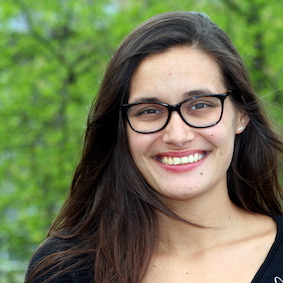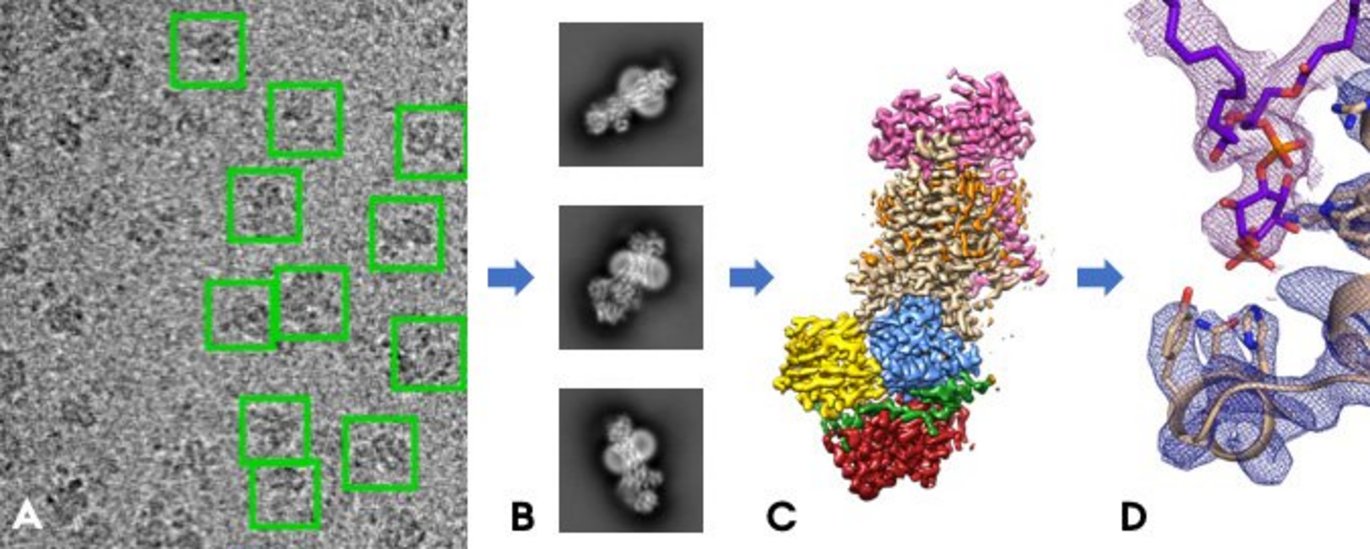Where are they now? Meet Milena Timcenko: from nanoscience in Aarhus to electron tomography in Cambridge
This month, we highlight DANDRITE alumna Milena Timcenko and learn where she’s letting her research interests in atomic-level protein structure take her.


Dr. Milena Timcenko completed her PhD degree in 2019 in Professor Poul Nissen’s group at the Danish Research Institute of Translational Neuroscience (DANDRITE) at Aarhus University, working on the atomic structure of lipid flippases using single-particle cryo-electron microscopy (EM). She is currently a postdoctoral researcher in Associate Professor Henriette Autzen’s group in the Department of Biology at the University of Copenhagen in Denmark. She is preparing to soon relocate to the MRC Laboratory of Molecular Biology (LMB) in Cambridge, UK for postdoctoral studies on protein structure using cryo-electron tomography with Dr. Radu Aricescu.
I recently caught up with Dr. Timcenko and learned about her career in academia so far and her future outlook.
How did you come to do your PhD at DANDRITE?
I was studying nanoscience for my undergraduate degree and was fascinated by the concept of trying to understand single molecules. When we needed to choose a project, I attended a fair of different research groups working with nanoscience. One of Poul's PhD students was there showing the conformational spectrum of a molecular transporter. It was so fascinating to see how the molecules move and to try to understand how they work from an atomistic point of view. It caught my attention and got me really interested in structural biology in the first place. I started in Poul’s group as a Master’s student. And then I stayed on as a PhD student because I really enjoyed both my project and working in that group.
What did you most enjoy about your PhD training?
One of the things I enjoyed most was being able to tackle very fundamental scientific questions. For my project, the aim was to solve the very first structure of a subfamily of P-type ATPases called P4 or lipid flippases. The proteins in this subfamily are about 180 kD and composed of two subunits, pretty suitable for cryo-EM. The project actually succeeded! I remember trying to build the molecule and finally getting it right, connecting the string of amino acids to fold into the electron density calculated from the cryo-EM data.
Also, I really enjoyed the opportunity to go to big conferences as a young student. I went to at least three large, international conferences, and many other meetings. For example, the first meeting I attended was a P-type ATPase meeting in Ostu, Japan in 2017. My abstract was selected for a short talk. While that was an exciting opportunity, it was also very nerve-wracking, because as a PhD student, I was one of the youngest people, career-wise, to give a presentation. The highlight of going to conferences is really getting to talk about my science and hearing about what other people are excited about.
How did your time at DANDRITE and in the Nordic EMBL Partnership help to shape your career to this point?
It really broadened my horizons and helped me see what is happening in science. You easily get stuck on your own very narrow project, and what the people immediately around you are doing, which is often quite similar when you're in the same lab, using the same techniques. With all of the different meetings that we were exposed to, we really also learned about other aspects of science. I got a look into completely different approaches because even within DANDRITE, people are doing animal studies and cell-based assays, which was far from the biochemistry and structural biology I did. Coming from the multidisciplinary field of nanoscience and being exposed to various areas in biology I'd never heard of before was really the most valuable thing for me.
What will you be working on in your new position at LMB?
In this postdoc project I’ll be looking at neurotransmitter receptors within a synapse, directly in the tissue, with the ultimate goal of trying to solve a high-resolution structure. I will still study single-molecule structures, as I did in my PhD, but now directly within a tissue sample. It is very ambitious, in my opinion. But I figured that if I was going to go abroad, then it needed to be something I couldn't do in Denmark. I'm very excited to see how far we get.
This project is a collaboration with Dr. Keisuke Yonehara from DANDRITE, who is now also at the National Institute of Genetics, Japan. His group will provide mice where the cells of interest are fluorescently marked, facilitating the identification of the right synapses in the microscope. They will also contribute to the understanding of the biological function of the system. I already visited the group to learn dissection techniques, and that was very different from anything I've done before.
How do you expect this project to prepare you for the next steps in your career?
The postdoctoral fellowship I have from the Novo Nordisk Foundation supports three years abroad and then one additional year in Denmark. That last year is aimed at bringing the knowledge I gained back to Denmark and trying to establish an independent research program. That part all depends on what results I have from the project. So, I'm still at the stage of setting myself up for an academic career. I'm just excited to do a fascinating project and see how far we get. And then, in three years’ time, I'll see what I have and what my next step will be. For now, I'm just taking it one step at a time.
Is there anything in your research career so far that has surprised you?
It surprised me how different things are in different universities and countries, and how the groups or research centers you join can affect the opportunities you get.
In addition to that, and more of a realization than a surprise, is how large a role luck plays in research. You can work really hard and never get ground-breaking results or even results you may have been hoping for. Or you might be lucky and quickly do the one thing that works. For example, in my project, I was learning how to prepare samples for cryo-EM. Thomas Boesen from iNANO cryo-EM facility at Aarhus University told me to bring some protein samples to practice with, so I brought one in detergent that I felt was least precious, and that we did not have too high of hopes for. The prepared samples had been sitting frozen in the dewar for a full year, if not more, before I had some empty slots in the microscope and decided to look at them. They turned out to give really beautiful images! On one hand it meant a year was wasted, but on the other hand, suddenly I was really close to my goal of solving the structure. It turned out that that particular detergent works really well for the P4 ATPase subfamily. Now a lot of structures have been published of different family members. So, this was a story of both luck and not.
There is a lot that’s out of your control when you're doing research. By working hard you increase your probability of getting lucky, but there are no guarantees.
If I only knew then what I know now…If you could give your younger self one piece of advice, what would it be?
To not stress about your project and just see how it goes. One of the things I have really come to appreciate from my time with Poul is how he was always optimistic. You could go into his office feeling really frustrated by something not working in the lab. And he would say that it's all going to be great. In that moment, it rarely felt like particularly useful words. But, looking back, as a PhD student when you're stressing yourself out about not having the right the result, or if you're working hard enough, or why your project is not progressing how you want it to, it's really valuable to have a supervisor who is calm and confident that you will graduate, it will be good, and everything will work out.
So, my advice would definitely be to try to find a calm within yourself and be confident that everything is going to be okay.
Brief career summary
Dr. Milena Timcenko was initially trained in nanoscience at Aarhus University, Denmark (M.Sc. 2015). In 2019, she completed her PhD in structural biology and single-particle cryo-electron microscopy at DANDRITE and in the Department of Molecular Biology and Genetics at Aarhus University, working with Professor Poul Nissen. Since 2020 she has been a Postdoctoral Researcher at the University of Copenhagen in the Department of Biology. She has recently been awarded a prestigious Novo Nordisk Foundation Postdoctoral Fellowship for research abroad allowing her to spend the next three years in Cambridge, UK at the Medical Research Council (MRC) Laboratory of Molecular Biology in the Neurobiology Division, followed by one year at the University of Copenhagen.
The “Where Are They Now? Nordic EMBL Partnership Alumni Careers” profiles introduce readers to alumni of the Nordic EMBL Partnership and the careers that they have embarked on.